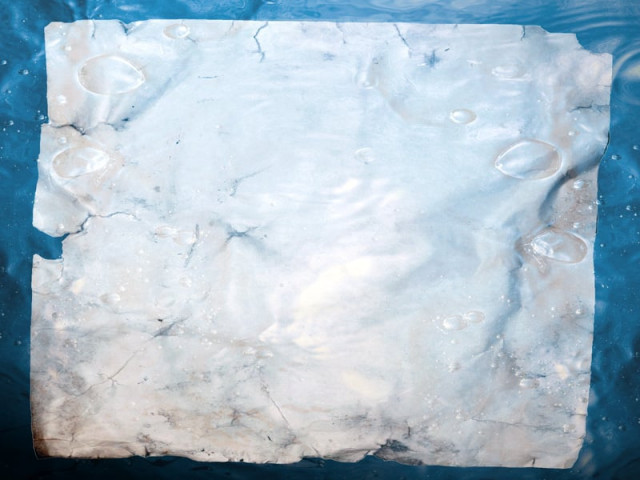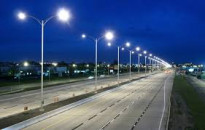Urban legend: Malevolent molecules
With a smell as the only evidence, these deaths are as deep a mystery as the water tanks they took place in.

With a smell as the only evidence, these deaths are as deep a mystery as the water tanks they took place in. DESIGN: MAHA HAIDER
Once dead, they surface on the pages of newspapers, tucked into the briefs section under vague headlines: man drowns cleaning water tank, father and son collapse due to suffocation, five of family killed in gas explosion...
What actually happens to people who die while cleaning their underground water tanks is a mystery. “They were dead within five minutes,” says Abdur Rehman, a resident of Zia Colony where a man and his two nephews died in 2012. “It cannot have taken any longer than that. They were foaming at the mouth. One of them was writhing.”
Eighteen-year-old Imran fell unconscious within seconds of entering the seven-foot deep tank he went to clean. “His brother could have easily pulled him out if not for the poisonous gas,” says Rehman. “He fell in as well and then their uncle who went in after them did not come out either.” Rehman tried to go in but was repelled by the nauseating stench.
There is no record keeping of people killed in water tanks - not to be confused with sewer manholes. Data from Police, Edhi and hospitals is unreliable. Many of the victims have been reported as drowned.
In Edhi records its ambulances has having transported 13 bodies linked to water tank deaths between March 2010 and August 2012. These accounts are not corroborated by police or medico-legal officers but are deduced from statements given by ambulance drivers. The information is not entirely correct in most cases.
For instance, the five people who died in Landhi’s Bhains Colony were reported as drowned in a well. But they were actually killed by a powerful poisonous gas in the underground tank. People there draw water from the aquifer. Someone has bored a 60-foot-deep well and supplies everyone water and it is used for drinking. “If sewerage was mixing with it, we would have tasted it,” said Zaheer Shah in whose house the tragedy took place. The well wasn’t even covered, leaving the question of how gases could have built up.
Not many people survive to tell the tale but one man documented his ordeal. In 2010 Muhammad Ayub Khan, a security adviser to a telecommunication firm, had a close brush with death in his Malir home while workers were installing a pipeline. He went to check on the progress. When his torch failed, he used a candle to peer into the manhole. “For a split second, there was a rumbling like an earthquake, then an explosion.” He regained consciousness 11 feet away, badly burnt.
Khan went about asking people in Malir. “It turned out, I wasn’t the only one. There have been similar occurrences but not as severe,” he said. “I know one thing for sure, that there is gas in the tanks.”
Poison
One theory is provided by Dr Majid Mumtaz, a professor at the University of Karachi’s chemistry department. “It’s halomethane that’s killing all the people,” he told The Express Tribune. “It’s present in the system of the Karachi Water and Sewerage Board (KWSB).”
Dr Mumtaz is a PhD in marine chemistry and has taken an interest in the presence of chlorine in tap water. “KWSB mixes chlorine in water to kill bacteria. But too much of it reacts with organic material and creates harmful byproducts, including trihalo methane gases,” he explained. “We have never paid any attention to this issue. But, I am convinced that deadly gases build up in the tanks.”
KWSB acknowledges that it maintains more chlorine than WHO recommends: 0.5ppm (part per million). At the filtration plants, up to 2.5 ppm is added but this comes down to 0.5ppm and 1.5ppm by the time it reaches homes.
Another theory is supplied by Misbahuddin Farid, KWSB’s managing director. He says that carbon monoxide (CO) might be present in the system. The deadly gas can be easily produced in a closed environment which lacks oxygen, explains Yayha Waseem, KWSB’s chief chemist. “Carbon is the most dynamic element. It is everywhere and it reacts in amazing ways. But there are so many things in water like bacteria and fermentation which can produce gases. It’s hard to be sure.”
Venting it out
Some old apartment buildings like Sagheer Centre in Federal B Area and large water installations like those at the fire brigade’s Saddar headquarters have U-shaped air ventilation pipes. The idea is that even if gases built up in a tank, they could escape.
“We need them to break the airlock so that the water comes in with pressure,” says plumbing engineer Faheem Siddiqui. “That is the only purpose of these pipes.” He does not believe the ventilation is meant to help gases escape.
Additionally, people should be aware that poisonous gases could build up if their pipes are empty and not carrying a regular supply of water from KWSB to their tanks.
Either way, the best option is to keep the tank uncovered for few hours before entering it and hope that you come out alive.
Published in The Express Tribune, March 17th, 2013.



















COMMENTS
Comments are moderated and generally will be posted if they are on-topic and not abusive.
For more information, please see our Comments FAQ